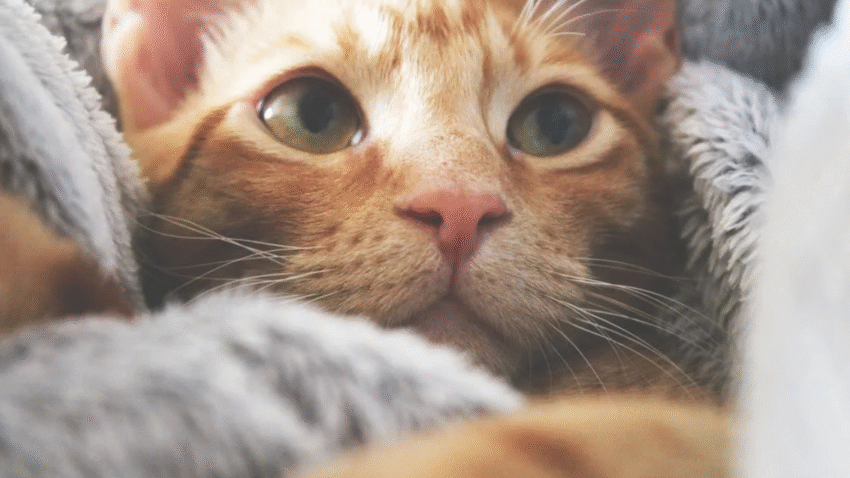Introduction
Is your cat scratching furniture, knocking things over, or biting when playing? Destructive behavior in cats can be frustrating—but it’s often a sign of boredom, anxiety, or misdirected energy. In this guide, you’ll learn how to redirect destructive cat behavior in a positive, effective way. Whether you’re dealing with a hyper kitten or a restless adult cat, these proven techniques will help restore peace to your home.
Why Redirecting Destructive Cat Behavior Matters
Cats don’t misbehave out of spite. Most destructive behavior is instinctual or stems from unmet physical or emotional needs. Common issues include:
- Scratching furniture instead of a post
- Biting or clawing during play
- Knocking objects off counters
- Chewing cords or plants
- Excessive digging in litter or rugs
Redirecting destructive behavior is essential because it:
- Protects your home and belongings
- Supports your cat’s mental and physical well-being
- Prevents the behavior from becoming a long-term habit
- Builds a stronger, more trusting relationship with your cat
The goal isn’t to punish, but to guide your cat toward healthier outlets for their natural instincts.
Step-by-Step Guide to Redirect Destructive Cat Behavior
Step 1: Identify the Root Cause
Understanding why your cat is acting out is the first step in changing the behavior. Ask yourself:
- Is my cat bored or under-stimulated?
- Is this behavior happening when I’m away?
- Is my cat seeking attention, food, or play?
- Are there environmental stressors like a new pet or loud noise?
Once you understand the “why,” you can provide the right redirection.
Step 2: Provide Acceptable Alternatives
Cats need an outlet for their energy and instincts. Offer alternatives that match the behavior:
- Scratching furniture? → Add a sturdy scratching post nearby
- Chewing plants? → Replace with cat-safe grass or chew toys
- Pouncing on hands/feet? → Use wand toys or plush mice
- Knocking objects off surfaces? → Clear spaces and provide puzzle toys or shelves for climbing
Always reward the behavior you want to see more of.
Step 3: Use Deterrents Strategically
Make destructive targets less appealing while encouraging use of alternatives:
- Apply double-sided tape or citrus spray on furniture
- Cover cords with protective tubing
- Place aluminum foil on counters they like to jump on
- Use motion-activated pet deterrents in no-go areas
Remember, deterrents should discourage behavior without causing fear or harm.
Step 4: Reinforce Positive Behavior
When your cat chooses the correct behavior, reward them immediately. Use:
- Treats
- Petting or verbal praise
- Playtime or a favorite toy
This teaches your cat that good behavior earns rewards and attention.
Step 5: Stick to a Routine
Cats thrive on predictability. Feeding, playtime, and cuddles should happen at similar times each day to reduce stress and limit attention-seeking destruction.
Daily routines reduce anxiety and help cats understand when to expect stimulation.
Common Mistakes to Avoid
1. Punishing Your Cat
Yelling, hitting, or using spray bottles can damage your bond and increase stress, making the behavior worse. Positive redirection works better in the long run.
2. Ignoring Environmental Needs
Cats need stimulation—mentally and physically. A lack of climbing spaces, toys, or attention can lead to destructive behavior.
3. Reinforcing Bad Habits Without Realizing
Laughing when your cat knocks something over or giving attention when they claw you during play can unintentionally encourage the behavior.
4. Being Inconsistent
Sometimes letting the cat on the counter, other times shooing them off, confuses your pet. Set clear boundaries and stick to them.
5. Expecting Instant Results
Changing behavior takes time, patience, and consistency. Celebrate small wins and be prepared for gradual improvement.
Extra Tips & Recommendations
- Rotate Toys Weekly: Keep your cat mentally engaged by rotating toys and puzzle feeders to avoid boredom.
- Create a Cat Enrichment Zone: Use shelves, tunnels, cat trees, and scratching posts in one area to give your cat a personal playground.
- Use Clicker Training: This positive reinforcement tool helps redirect and reinforce good behaviors like sitting, staying off counters, or using a scratching post.
- Try Calming Aids: Pheromone diffusers, calming collars, or herbal sprays can help reduce anxiety-related destructive behavior.
Need help with scratching issues? Check out our guide on [how to train your kitten to use a scratching post].
Conclusion
Destructive cat behavior can be challenging, but with the right approach, it’s completely manageable. By understanding your cat’s needs, providing alternatives, and using positive reinforcement, you’ll not only protect your home—you’ll also help your cat become more balanced, confident, and content.
Stay patient, stay consistent, and remember: every cat can learn new behaviors with the right support.
